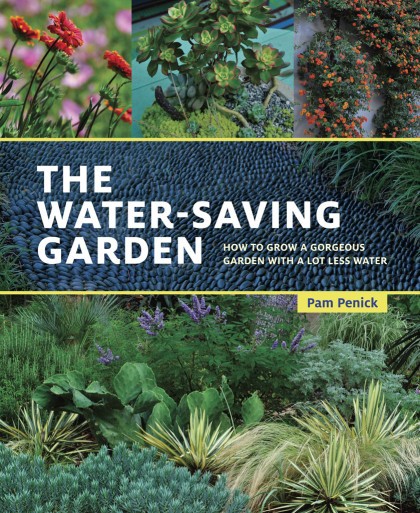 I’m thrilled to be invited to help celebrate the release of Pam Penick’s second book, The Water Saving Garden, with a party that you’re all invited to attend (awesome prizes included!)
I’m thrilled to be invited to help celebrate the release of Pam Penick’s second book, The Water Saving Garden, with a party that you’re all invited to attend (awesome prizes included!)
As a follow-up to her first book Lawn Gone (and one of my personal favorites), The Water Saving Garden delves even deeper into the practical solutions of conserving water in the garden.
Living and gardening along the West Coast, gardeners have learned to embrace the fact that drought conditions are a fact of life.
Pam’s new book couldn’t have come at a better time! It’s chock full of inspiring before-and-after photos of water-thrifty gardens, offers a wide range of drought-resistant plants, and introduces various ways to conserve water in the garden (ranging from wise plant selection, to choosing rain barrels, cisterns, graywater systems, etc.)
I thought you might enjoy the interview I conducted with Pam, who talks her experiences as a designer in drought-stricken Austin, as well as sharing some highlights of her new book:
1. Over the years, you’ve visited some of the most amazing low-water gardens from all parts of the country, and I always love reading about them on your award-winning blog, Digging.
Are there any beautiful, bullet-proof plants you see over and over again that people tend to overlook?
PP: “Bulletproof for the whole U.S., with climates ranging from desert to subtropical to temperate to alpine, is like searching for a unicorn – i.e., wouldn’t it be wonderful! I always recommend listening to local plant experts first and foremost. Still, some water-wise plants are readily adaptable to a wide range of conditions, and they’re beautiful too!
For flower color and attracting butterflies and other pollinators, some great choices include butterfly weed (Asclepias tuberosa), threadleaf coreopsis (Coreopsis verticillata), catmint (Nepeta x faasenii), and gaura (Gaura lindheimeri). Lewis’ mock orange (Philadelphus lewisii) is a hardy and adaptable large shrub or small tree.
And don’t forget native grasses and sedges. Northern or inland sea oats (Chasmanthium latifolium) and various sedges (Carex spp.) make attractive groundcovers in sun or dry shade, and if you have deer, grasses are nearly deer-proof.”
2. I’ve noticed many gardeners are a little wary of removing their lawn and/or converting their garden to one that is 100% low-water for fear of creating a parched looking, hot and dry garden.
For gardeners who want a lush look while saving water, do you have any favorite plant combos to recommend?
PP: “I often hear people call xeriscapes “zero-scapes,” and if you rip out your lawn and just dump a load of gravel across your lot in order to save water, that’s really what you’ll create: a zero-scape that’s baking hot in summer and that can easily become overrun with weeds. Instead, use low-water plants to reduce your water bill while keeping your yard cool and green and creating habitat for birds, bees, and other wildlife.
If you like the look of lawn, try growing an expanse of sedge instead. It creates a shaggy swath of green that needs mowing only about once a year and uses significantly less water than traditional lawn. If you have enough sun, plant bulbs, which tend to be water-thrifty, in naturalistic clusters throughout the sedge, and enjoy a meadow-like flowering when they come into bloom. Try daffodils, crinums, irises, rain lilies, and spider lilies.
Sedge is one type of groundcover, but you’re sure to find other options for your area. In a frost-free climate, try low-growing succulents like sedum or echeveria. In cooler climates, Turkish speedwell (Veronica liwanensis) or leadwort plumbago (Ceratostigma plumbaginoides) may be good choices. Choose several types and plant them liberally around and in front of your perennials and shrubs to give your water-saving garden a lush look. Groundcovers aren’t usually the showiest plants, but they’re hardworking. By covering bare soil, they help conserve moisture in the soil and add extra greenery to a drought-tolerant garden.”
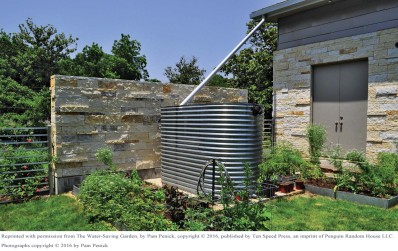
3. California’s average rainfall is in the 17-22 inches range.
In arid climates like mine, do you have a favorite rain catchment system that’s also easy to install?
PP: “A rain barrel is so simple to set up: just position it under an eave of your roof to collect rain running off the roof. But by doing a little bit extra, you can really increase your rainwater collection.
Install a gutter along your eave and run the downspout into a rain barrel. Use a connector system to hook up multiple rain barrels so that the overflow from one fills up the next one. (Two sources: http://www.therainbarreldepot.com/earthminded-do-it-yourself-rain-barrel-extension-linking-kit/ and http://www.gardeners.com/buy/rain-barrel-linking-kit/33-993.html#start=3 )
Direct the overflow (because one rain shower can easily fill a rain barrel that’s connected to a downspout) into a rain garden, a shallow depression planted with grasses and other plants that can handle both drought and brief periods of standing water.
Now you’ve set up a collection system that holds water for later use and that prevents runoff by using it to water plants!”
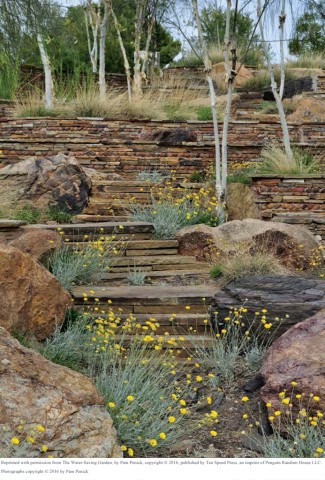
4. What’s your favorite trick for creating the illusion of water in a garden?
PP: “It’s hard to choose! I adore a “pool” of a silvery groundcover like Dymondia margaretae. And stone laid to imitate a cascading waterfall can be very beautiful.
But I guess my favorite water illusion, and one that’s easy to create in even the smallest space, involves using succulents in a container to create an “under-the-sea” garden (use ‘Sticks on Fire’ euphorbia for branching coral, paddle plant for clamshells, blue chalksticks for anemones, etc.) or a water lily “pond” (use echeverias or dinner-plate aeoniums for the water lilies and spread blue-glass mulch between them for “water”). These illusions also introduce a whimsical sense of fun into a dry garden.”
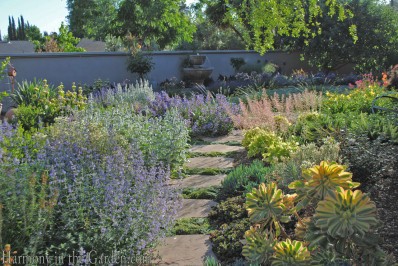
5. Can you explain your Ripple-Zone Gardening concept and how gardeners can implement it in their gardens?
PP: “Imagine dropping a stone into a pond. Ripples spread outward in ever-widening circles from where you dropped the stone, right? Now picture your house as the stone and your garden as the rippling water. Each ripple represents a thirst zone for your plants: the most water-needy plants inhabit the zone encircling the house; drought-tolerant plants live in the middle zone(s); and at the perimeter of your property grow the least water needy.
Picture the ripple closest to the dropped stone. It’s the smallest ripple. This area, right around the house, is where you might indulge in plants that need some extra babying with the hose. By having them close to the house, you can more easily water them and enjoy them on a daily basis. After all, why bother with plants that need extra water if you don’t get to enjoy them every day?
As you move away from the house, plant each ripple zone with more and more water-thrifty plants. If your property is large enough, at the perimeter you might have plants that need watering only once a month, or that get by on rainfall alone. By clustering plants according to water need — planting larger areas with water-wise plants and saving thirstier plants for the small area around your home — you can maximize your water savings without having to sacrifice all your favorites that need extra water.
Obviously, you have to make adjustments for reality – say, if the area closest to your house is naturally hot and dry, while a low area out by the fence is naturally cool and damp, you’ll want to plant accordingly. But all else being equal, ripple-zone planting is a helpful tool to guide you in making smart and water-efficient planting choices.”
 ……………………………………………………………………………………………………………………………………………………………………………..
……………………………………………………………………………………………………………………………………………………………………………..
Ready to join the Party? (sorry, contest closed!) UPDATE: CONGRATULATIONS BRENDA THOMPSON! You’re the winner of the succulent planter! I’ve sent you an email, so if you can please send me your mailing address we’ll make sure to get the planter shipped to you asap. Thanks, everyone, for entering and Happy Spring!
How to enter: There are 7 bloggers participating in this fabulous giveaway, each offering a different prize. All you have to do to enter is visit each blog and leave a comment for a chance to win the prize offered on their site. The more blogs you visit, the more chances to win! One entry per person, per blog.
A few more details: A random winner will be chosen by midnight Sunday, March 6th and will be announced on Monday, March 7th. The winner will be contacted within 24 hours. If the proposed winner forfeits or does not claim the prize by March 12th, the prize will be re-awarded based on the sponsor’s sole discretion. All prizes will be awarded. Please provide your first and last name to enter this contest so I can immediately contact you if you win. The winner agrees to allow his/her first name to be mentioned in conjunction with this giveaway.
This giveaway is limited to U.S. residents only (excluding Alaska and Hawaii – sorry!), who are over the age of 18 years old. No purchase necessary to win. This sweepstakes is also void where prohibited by law (wherever that is, I’d sure hate to live there!) By entering this giveaway, you agree to these conditions.
……………………………………………………………………………………………………………………………………………………………………………..
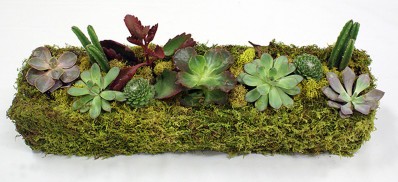 Here on my blog, I’m offering this gorgeous 18-inch tabletop succulent planter which arrives already designed and planted for you, compliments of Boxhill.
Here on my blog, I’m offering this gorgeous 18-inch tabletop succulent planter which arrives already designed and planted for you, compliments of Boxhill.
As many of you already know, I’m a huge fan of succulents in the garden as they’re low-water, low-maintenance, long-lived, and wildly gorgeous. Enter to win this planter and bring a touch of the outdoors into your home.
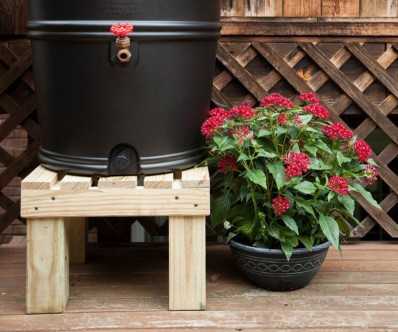
For a chance to win a 50-gallon rain barrel (with its own stand), check out Rock-Oak-Deer’s blog and enter to win one for your own garden, compliments of The Rain Barrel Depot.
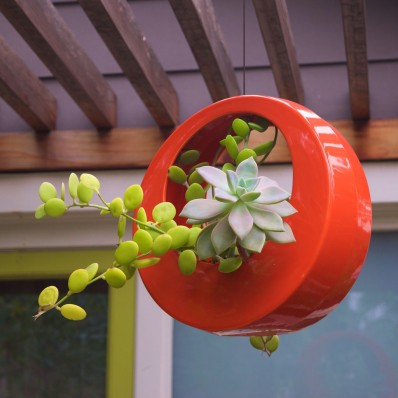
Over on Danger Garden’s blog, she’s offering a stunning ceramic Circle Pot from Potted (one of my favorite shops in Los Angeles)
On Pam’s blog, Digging, she’s offering a $100 gift certific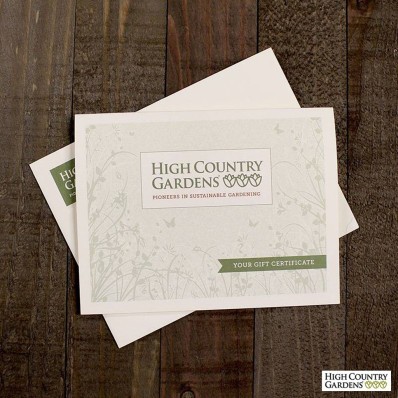 ate from High Country Gardens. For those of you unfamiliar with this amazing online nursery, you’re in for a treat.
ate from High Country Gardens. For those of you unfamiliar with this amazing online nursery, you’re in for a treat.
It not only caters to gardeners who are committed to xeriscaping but they offer amazing, uncommon plants that are hard to find in local nurseries.
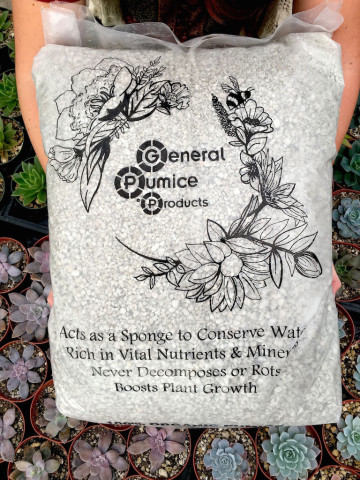
Over on North Coast Gardening, THREE lucky winners have a chance to each win 3 bags of pumice from General Pumice Products.
Pumice is the ideal additive to help condition clay soil, preventing root rot in water-sensitive plants such as succulents, leucadendron, protea, euphorbias, etc.
For those of you unfamiliar with pumice (no – it’s not perlite!) click here to read an interview I conducted with the owners of this company

Interested in a 65-gallon rainwater urn for your garden? Head on over to Red Dirt Ramblings for your chance to win one, compliments of Gardener’s Supply Company.

Head on over to Clay and Limestone for a chance to win a 55-gallon rain barrel, compliments of Epoch Rain Barrels.
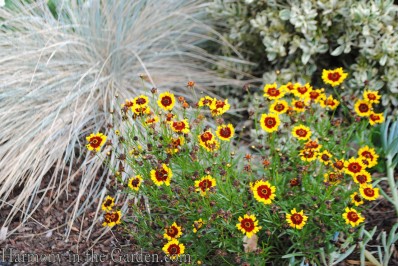
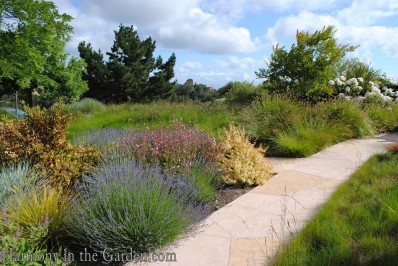
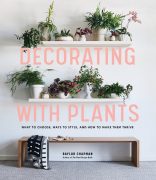




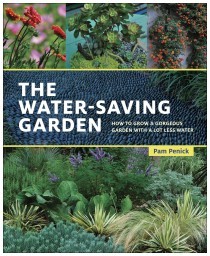
65 Comments
Looks super cool!
I cannot wait to read this book on water saving gardens. Succulents are one of my favorite plants .. what a lovely planter!
Gorgeous book and I need this succulent box!
Every year I try to add more water-wise plants and techniques to my garden. The more I do, the more beautiful my garden looks and the less work I have to do. Plus, it attracts even more wildlife to the garden. I can’t wait to read Pam’s new book to get even more ideas for new water-wise projects.
Always enjoy your blog and love Pam’s book. What a beautiful planter! Thanks for the opportunity.
My book is on the shelf waiting for a rainy day!! Maybe this week they say but this is Texas and we have to garden as thou we will never see rain again. Would love to have this succulent planter on my outside table. Thanks for promoting Pam’s book and the giveaway.
Wonderful giveaway! Great information on xeriscapes. I leave a bowl with rocks and water for the wildlife.
thanks for all the great information
I’m ready to soak up as much information as possible about gardening now that the dead front lawn is gone. I have a blank palette so after the March Miracle rains end in Northern California, I will be spending spring in the yard. Thank you for all the wonderful advice and inspiration!
Succulents! The hope of the future! Please enter me in your giveaway!
Looking forward to enjoying Pam’s new book. Thanks for entering me in the drawing! Linda
After the last few drought years here, I’ve been including more succulents in my patio garden, as well as native plants in my landscape. I am amazed at the variety of succulents and cactus available that add so much interest to the garden. Thanks to all of you bloggers that give the rest of us such great inspiration.
I love the look of the flagstone path with Dymondia growing between the steps! I am getting ready to implement this element in my front yard!
Im so glad that water conservation in gardening is slowly becoming a trend.
I’m so eager for a touch of spring! In my rental I’m limited in my gardening options, but indoor planters are perfect 🙂
Beautiful pics! Can’t wait to read.
This would be lovely.
Need all the tips you can give for a water-wise garden. Thanks! Succulents are my favorites.
Succulents rule. I love your tips and photos.
Seems like a fascinating read… Looking forward to checking it out! It may contain nuggets of wisdom that would make for a good combination with my area of study, electroculture.
What a beautiful planter. I enjoy reading your blog, and Pam’s, and have just begun reading her new book. Lots of inspiration.
Lovely giveaway that would make any suckers for succulents jubilant! All the best to Pam for a successful launch of her latest.
I have never grown succulents before… Unless aloe is a succulent? Anyway, thanks for the giveaway chance :o)
I love that succulent arrangement! So pretty!
You go girl! I also have had cancer. It’s life grand? Nita
Oh! It would be wonderful to win such beautiful gardening things!
This is lovely reading!
Love the giveaway.
Love your blog site! And also glad to hear you are feeling better.
What a cool succulent planter! I’m thrilled to have the chance to win it, thank you!
Lovely planter that would make my new apartment feel like home. Can only garden in containers, but really appreciate the concept of low water gardening.
Thank you for the chance to win
My daughter is crazy about succulents. This is a beautiful creative prize! Thanks for including my entry!
This planter is just beautiful!
Beautiful!
Thanks for helping out Pam! 🙂
What a wonderful prize!
Thanks, Rebecca for the book recommendation and the tips, I look forward to ordering it. I had not heard of the term Ripple zone, and now, I am rethinking about a new area that I am planting. Your latest book totally changed how I plant. It’s my new garden “bible.”
Pam is a star! Great idea to throw this party!
Definitely the lady to write the book! Thanks for co-hosting this party for her 😉
I love succulents! My mom always had them around the house.
Rebecca, I enjoyed talking with you about water-saving plants and design techniques. And I love that you illustrated your post with your own beautiful water-saving designs! Thanks for hosting the book party with me, and the gorgeous giveaway from Boxhill!
Thank you for all these tips. I really appreciate them. The planter is fantastic. I sure would love to win it! Thank you for the chance.
Thanks for the opportunity to get to know a bit more about the book through your interview and preview. Sounds perfect for my dry, desert climate in eastern WA. The succulent planter is lovely and would be a welcome addition to my garden.
Looking forward to Pam’s book and winning the succulent box!
Pam really knocked another one out of the park! Solid info punctuated with delicious photography.
This book is a must-have! Great informaton for my dry climate woes!
Pam’s new book sounds really good and I enjoyed reading your interview. I’d love to win the Succulent garden….I live in Michigan so I bring all of mine in side in the winter.
Well I certainly need that succulent planter, wouldn’t you agree?
Across the country, gardeners are looking to the west coast for inspirational water-saving ideas. While we are blessed with more frequent rain here in NE Wisconsin, we too are beginning to pay more attention to conserving our water resources and limiting runoff carrying chemicals and fertilizers with phosphorous into our local streams, rivers and lakes.
Woohoo! So excited to be apart of this giveaway! Good luck everyone!
Wow – great pictures of non thirsty landscapes!!!
Great book, I just added it to my Amazon wish list. Thank you for the giveaway!
Want to hear something ridiculous? It is illegal to have rain barrels in CO! How stupid is that? They are trying to change the law…
Your interview with Pam is a wonderful accompaniment to the book!
Love, love love that succulent planter. Thanks for the chance to win one!
Thanks for spreading the word on Pam’s new book.
I got the book last week and just love it. Pam is an excellent author and her book is full of useful information and wonderful photos. I would love to have the cactus garden!
My area of rural western Maryland has its inundating rains and its interminable (seeming) dry spells, and over the past 24 years that I’ve been gardening here I’m still learning what thrives, what’s neighborly, and what doesn’t belong. Sedum, Sempervivum, Euphorbia species and a wide variety of native prairie grasses help cover my three acres, along with native perennials and shrubs. They give me sustenance every bit as much as my large organic vegetable garden.
I would be happy to win the Boxhill planter. Thank you!
I am a hopeless succulent addict and would love to win this planter!
The succulent planter is my favorite of all the giveaways. I am a plantaholic & succulents are some of my favorite plants.
Thanks for your informative blog. Overcoming water and rain shortages is a constant challenge. HOpe you can include me in your give-away to I can help educate others.
My kind of garden! Happy gardening.
Thanks for a great book offer! Always enjoy your blog!
my goodness, what a wonderful prize. Definitely hoping to win this time!
Would love to have this book. It going to be a great help to alot of people who want to save water !
So great to read these tips! I’m due for a complete wate-wise, native, bird and bug friendly lawn and garden overhaul as I’ve all but given up in these drought conditions!